Hi, this is Lizzy from Dinosaw ( Not a Robot ). Which Machine ( model ) do you want? Please WhatsApp us now
Complete stone crusher buying guide with ROI analysis, cost comparison, and expert selection tips. Compare jaw, cone & impact crushers for optimal investment.
Choosing the right stone crusher can make or break your operation's profitability for the next decade. With the global stone crushing equipment market expected to hit $12.4 billion by 2032, getting this decision right matters more than ever. What's more, with U.S. crushed stone production reaching 1.5 billion tons worth $26 billion in 2024 alone, your crusher selection directly impacts your competitive edge in this massive industry.
Here's the reality: most stone crusher buying decisions focus too heavily on upfront costs while ignoring the bigger picture. Smart operators know that total cost of ownership, ROI analysis, and operational efficiency determine long-term success. Based on industry data, the right crusher machine can boost productivity by 25-40% while cutting operational costs significantly over its 10-15 year lifespan.
This comprehensive stone crusher buying guide cuts through the complexity with actionable insights from real-world applications. Whether you're launching new operations or upgrading existing equipment, you'll discover proven strategies for crusher selection, ROI optimization, and risk management that align with your operational goals and budget constraints.
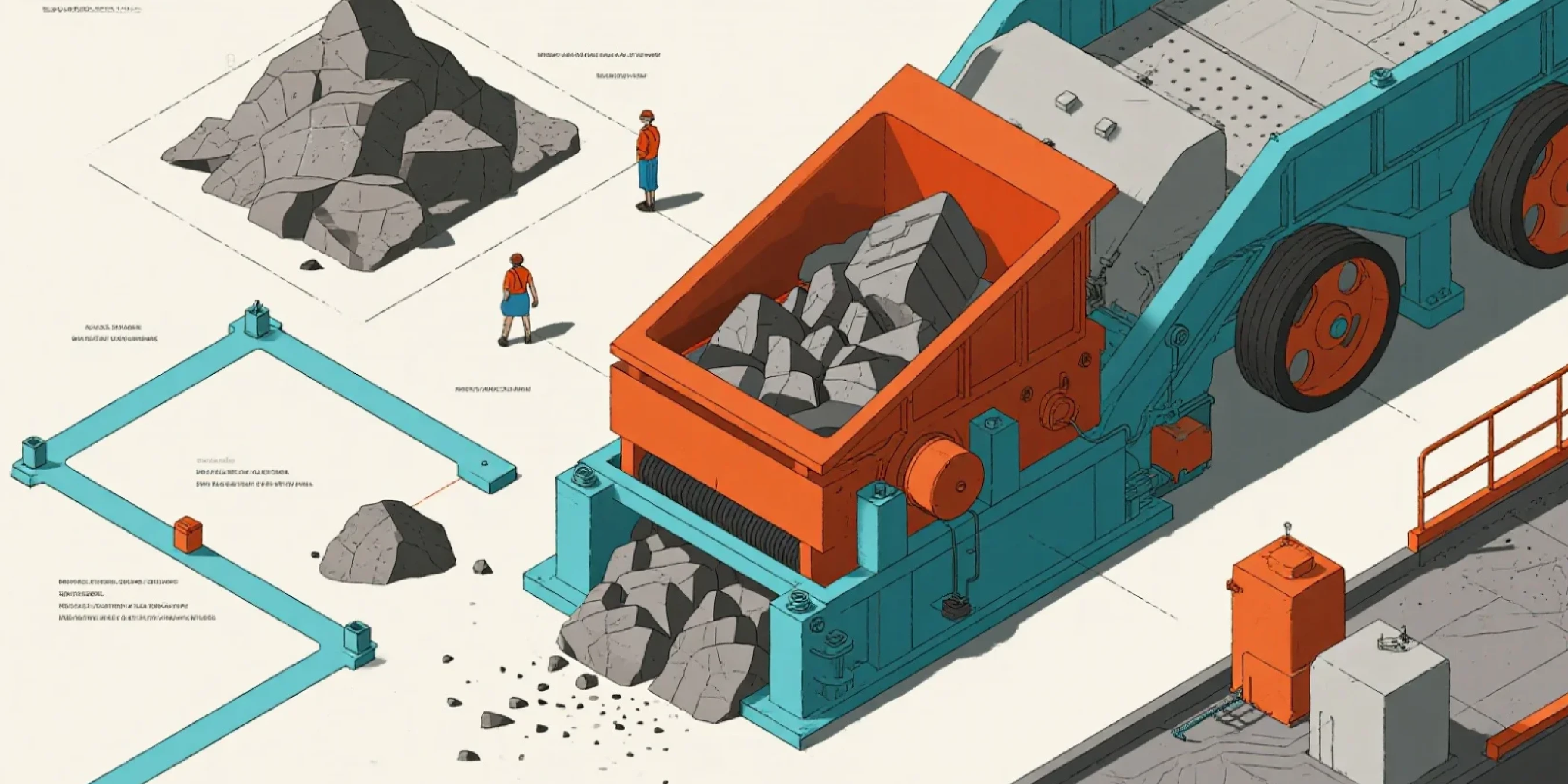
Stone Crusher Selection: Where to Start
Understanding Your Crushing Requirements
Smart crusher selection starts with clearly defining your operational requirements. First, establish your target production capacity in tons per hour, factoring in both current needs and projected growth over 5-10 years. What's more, document your feed material characteristics including maximum size, hardness levels, and desired output specifications.
Don't forget operational schedules - daily hours, seasonal patterns, and maintenance windows all influence equipment sizing decisions.
Site-specific constraints often determine your options more than you'd expect. Consider available space, power supply capacity, environmental restrictions, and transportation access. These factors directly impact whether you need mobile or stationary crushing systems, electrical or diesel power, and specific emission controls. Based on this assessment, evaluate your material handling needs including conveyor integration, stockpiling requirements, and loading facilities.
Production Capacity Planning & Future Growth
Accurate capacity planning requires understanding both peak demand and sustained production needs. Calculate required throughput based on annual goals, accounting for equipment availability factors typically ranging from 75-85% for well-maintained operations. Consider seasonal fluctuations, maintenance schedules, and market growth projections that may demand increased capacity over your equipment's lifetime.
Smart operators plan for scalability by selecting equipment that allows future expansion through modular additions or upgraded components. Evaluate whether your chosen crusher can accommodate increased throughput through operational optimization, additional units, or larger replacements. More importantly, factor in infrastructure requirements like power capacity, foundation specs, and material handling systems that must support both current and future production levels.
Material Analysis: Hardness, Abrasiveness, and Feed Size
Material characteristics fundamentally determine crusher selection and operational parameters. Conduct comprehensive material testing to determine compressive strength, abrasiveness index, moisture content, and gradation distribution. Hard materials exceeding 150 MPa typically require jaw or cone crushers, while softer materials below 100 MPa work efficiently with impact crushers. Highly abrasive materials demand specialized wear-resistant components and may require different crusher technologies to minimize maintenance costs.
Analyze feed size distribution to ensure your selected crusher handles maximum particle sizes while maintaining efficient production rates. Consider contamination levels including clay content, organic materials, and metallic inclusions that may require preprocessing. Understanding these material properties enables accurate wear part life predictions, maintenance scheduling, and operational cost calculations essential for ROI analysis.
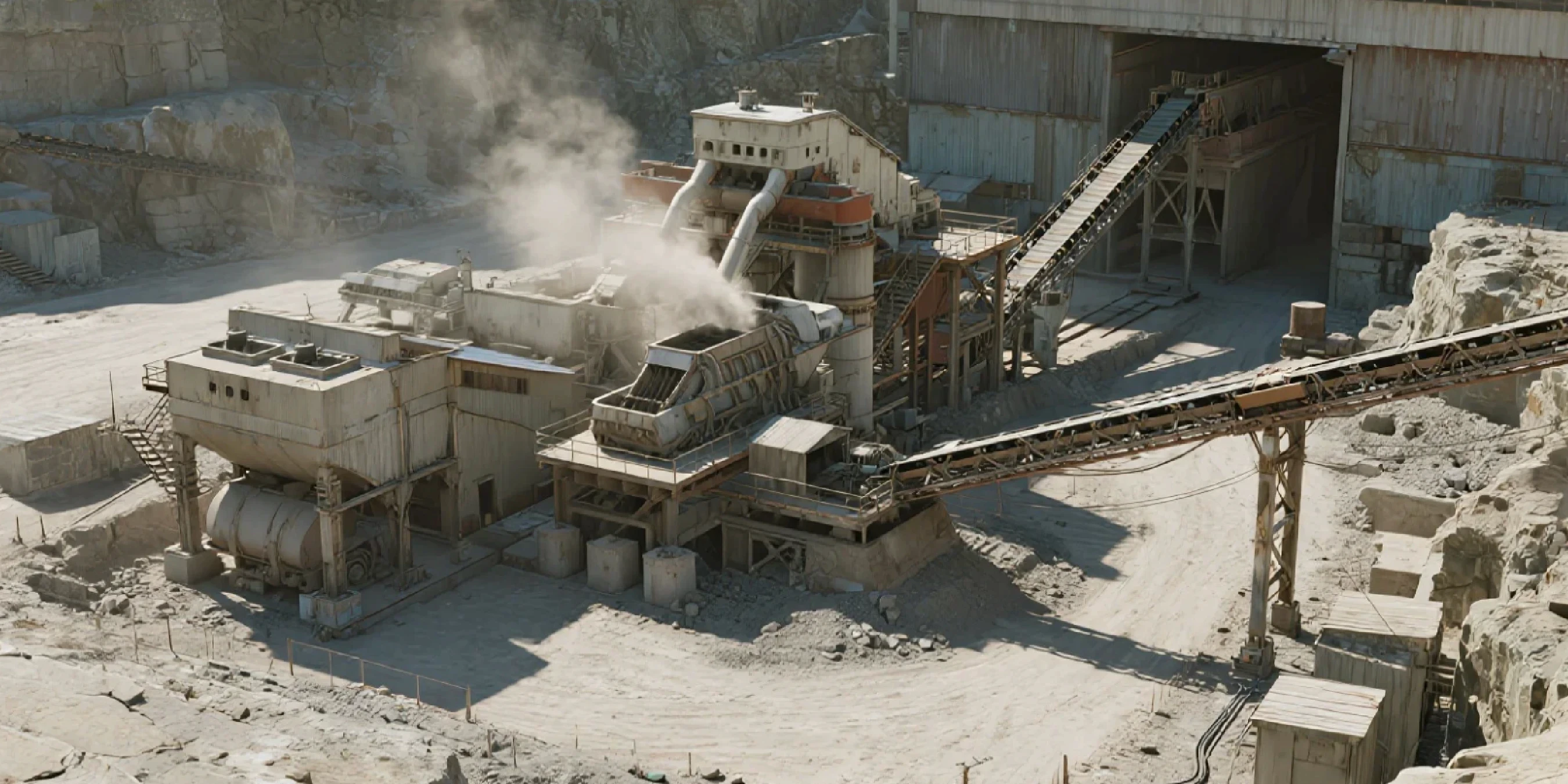
Technical Knowledge You Need Before Buying
Crushing Stages: Primary, Secondary, and Tertiary
Understanding crushing stages enables optimal system design and equipment selection for your application. Primary crushing typically handles feed materials from 1000mm down to 150-300mm, requiring robust equipment for large, irregular rocks from blasting or quarrying. Secondary crushing further reduces material from 150-300mm to 50-100mm, often requiring different crusher technologies optimized for higher throughput and consistent sizing. Tertiary and quaternary crushing stages produce final product specifications, typically reducing material to 20-40mm or smaller depending on end-use requirements. Each stage requires different technologies - jaw crushers dominate primary applications, cone crushers excel in secondary and tertiary roles, and impact crushers provide versatility across multiple stages. Understanding stage-specific requirements helps optimize crusher selection for maximum efficiency and product quality.
Key Performance Metrics and Specifications
Critical performance metrics include throughput capacity measured in tons per hour, reduction ratio indicating size reduction efficiency, and power consumption per ton processed. Evaluate crushing force specifications, chamber design parameters, and adjustment capabilities that directly impact product gradation and operational flexibility. Monitor wear rates for key components including jaw plates, cone liners, and impact bars that significantly influence operating costs and maintenance schedules.
Consider automation capabilities including load monitoring, adjustment systems, and remote diagnostics that enhance operational efficiency and reduce labor requirements. Evaluate dust suppression systems, noise control measures, and vibration isolation that may be required for environmental compliance. Understanding these specifications enables accurate performance comparisons and helps identify equipment delivering optimal value for your applications.
Safety Standards and Environmental Compliance (MSHA/OSHA)
Compliance with MSHA regulations and OSHA safety standards is mandatory for crushing operations, requiring specific safety features and operational procedures. Ensure your selected equipment includes appropriate guarding systems, emergency stops, lockout/tagout provisions, and access platforms meeting current safety requirements. Verify that dust control systems comply with silica exposure limits and that noise levels meet workplace safety standards.
Environmental compliance requirements vary by location but typically include dust emission controls, noise abatement measures, and stormwater management systems. Consider equipment features such as water spray systems, enclosures, and sound dampening that may be required for permit compliance. Factor compliance costs into your total investment calculation, as retrofitting safety and environmental systems can significantly impact project economics.
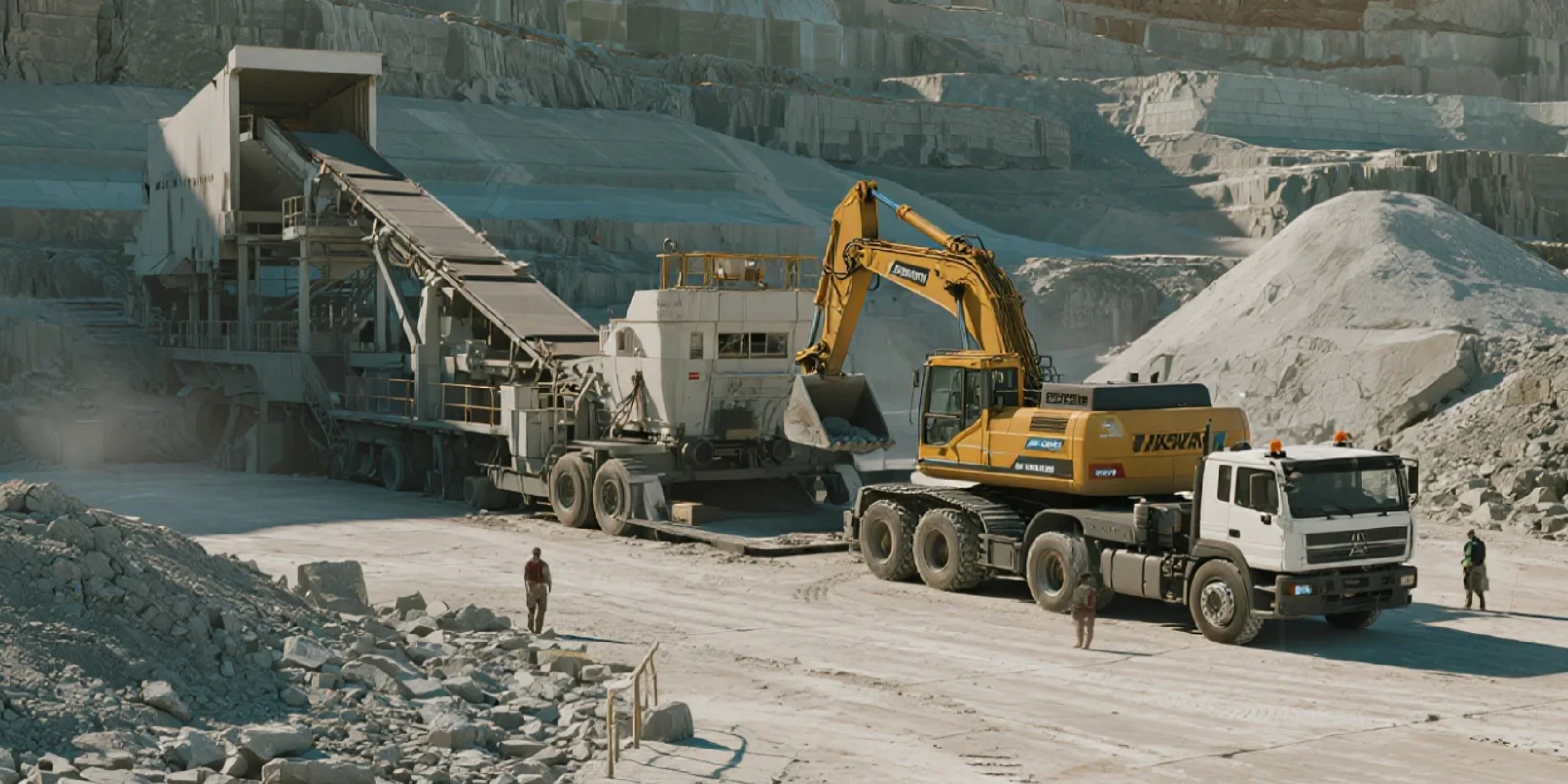
Types of Stone Crushers: Complete Comparison
Jaw Crushers: Best for Primary Crushing
Jaw crushers excel in primary crushing applications, handling large feed materials up to 1500mm with robust construction designed for continuous heavy-duty operation. The compression crushing action between fixed and movable jaw plates provides excellent reduction ratios from 4:1 to 9:1, making them ideal for initial size reduction in quarrying and mining operations. Modern jaw crushers feature hydraulic adjustment systems, automated lubrication, and condition monitoring capabilities that enhance reliability and reduce maintenance requirements.
Consider jaw crusher advantages including simple operation, high throughput capacity, and excellent durability when processing abrasive materials. Evaluate models with hydraulic toggle systems for overload protection and easy maintenance access. For operations requiring high-quality aggregate production, investigate jaw crushers with optimized chamber designs that minimize fines generation while maintaining high productivity levels.
Cone Crushers: Secondary and Tertiary Applications
Cone crushers provide superior performance in secondary and tertiary crushing stages, offering precise control over product gradation and excellent cubicity for high-quality aggregate production. The crushing action between eccentric mantle and concave liners enables reduction ratios from 3:1 to 8:1 with consistent product sizing essential for specification compliance. Modern cone crushers incorporate automation systems including automatic setting regulation, tramp release protection, and real-time monitoring that optimize performance while minimizing operator intervention.
Evaluate cone crusher configurations including standard, short head, and hydraulic designs based on your specific application requirements. Consider manufacturers offering interchangeable crushing chambers that enable rapid reconfiguration for different product specifications. Factor in liner wear patterns and replacement procedures that significantly impact operational costs and maintenance scheduling in high-production environments.
Impact Crushers: Versatile Solutions
Impact crushers provide versatility across multiple crushing stages, excelling with softer materials and recycling applications where high reduction ratios and excellent cubicity are required. Horizontal shaft impactors (HSI) offer precise gradation control through adjustable impact plates and rotor speed optimization, while vertical shaft impactors (VSI) excel in sand production and manufactured sand applications. The impact crushing action produces superior particle shape compared to compression crushers, making them ideal for concrete and asphalt production.
Consider impact crusher advantages including high reduction ratios, excellent product shape, and flexibility in handling various feed materials. Evaluate wear part life and replacement costs carefully, as impact crushers typically have higher maintenance requirements than compression crushers. Investigate models with hydraulic adjustment systems and quick-change wear parts that minimize downtime during maintenance operations.
Mobile vs. Stationary Crusher Systems
Mobile crushing systems provide operational flexibility for projects requiring frequent relocation, contract services, or remote sites where permanent installations are impractical. Track-mounted and wheel-mounted units enable rapid deployment and setup, reducing mobilization costs and enabling efficient processing of multiple quarry faces or construction sites. Consider mobile systems when your operation requires flexibility to follow mining progression or service multiple locations with varying production requirements.
Stationary crushing plants offer higher productivity, lower operating costs, and enhanced automation capabilities for fixed location operations with consistent long-term production requirements. Permanent installations enable optimization of material flow, integration with conveyor systems, and implementation of advanced process controls that maximize efficiency and product quality. Evaluate total cost of ownership including transportation, setup costs, and productivity differences when comparing mobile versus stationary options for your specific application.
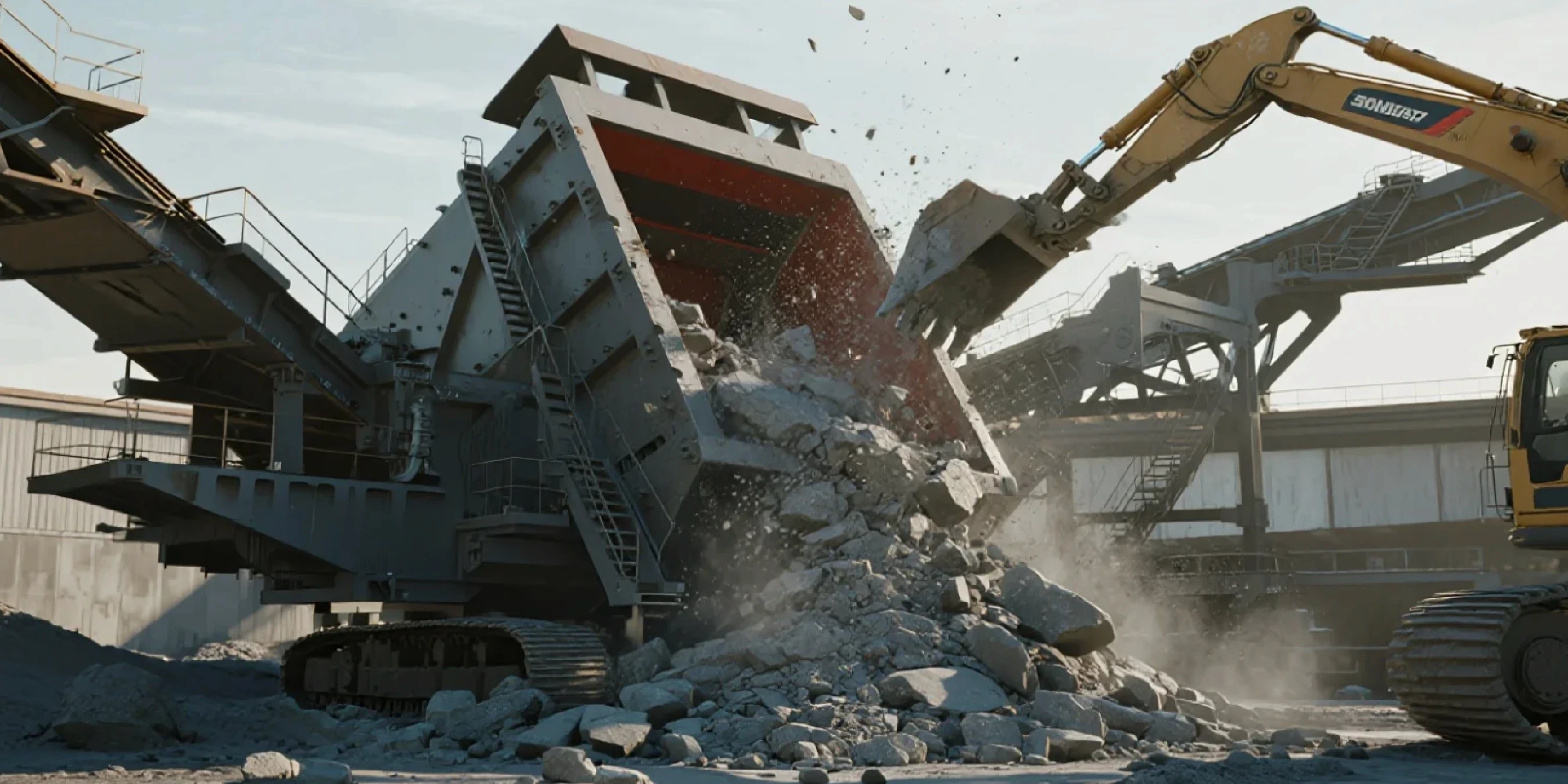
Applications by Industry and Use Cases
Mining Operations: Large-Scale Processing
Mining operations require high-capacity crushing systems capable of processing thousands of tons per hour with minimal downtime and maximum reliability. Primary crushing stations typically utilize large jaw crushers or gyratory crushers designed for continuous operation in harsh environments. Secondary and tertiary crushing circuits employ cone crushers optimized for specific ore characteristics and downstream processing requirements. Consider automated control systems, remote monitoring capabilities, and predictive maintenance technologies essential for large-scale mining efficiency.
Evaluate crushing equipment integration with mining infrastructure including conveyor systems, stockpiling facilities, and ore transportation networks. Factor in processing requirements for different ore types, grade control considerations, and environmental compliance specific to mining operations. Consider equipment suppliers with proven mining industry experience and comprehensive support networks capable of minimizing operational disruptions.
Construction & Infrastructure Projects
Construction projects require crushing equipment capable of producing specification-compliant aggregates for concrete, asphalt, and road base applications. Product quality requirements including gradation compliance, particle shape, and cleanliness drive crusher selection toward technologies that minimize fines generation and maximize cubicity. Mobile crushing systems often provide optimal solutions for construction projects due to changing site requirements, temporary operations, and transportation considerations.
Consider crusher configurations optimized for specific construction materials including recycled concrete processing, natural aggregate production, and specialized applications such as railroad ballast or drainage stone. Evaluate equipment features including pre-screening capabilities, washing systems, and dust suppression that may be required for urban construction environments with strict environmental regulations.
Quarrying: Aggregate Production
Quarrying operations focus on maximizing aggregate quality while minimizing production costs through efficient crushing circuit design and optimization. Primary crushing typically employs jaw crushers or impact crushers depending on material characteristics and product requirements. Secondary and tertiary stages utilize cone crushers or impact crushers configured to produce multiple specification products simultaneously. Integration with quarry cutting equipment enables optimized material preparation and enhanced crushing efficiency.
Consider quarry-specific requirements including dust control systems, blast vibration monitoring, and community relations that influence equipment selection and operational procedures. Evaluate crushing system scalability to accommodate quarry expansion, product diversification, and changing market demands over the facility's operational lifetime. Factor in transportation logistics, stockpiling requirements, and load-out facilities that must integrate efficiently with crushing operations.
Recycling: Concrete and Demolition Waste
Recycling applications require crushing equipment capable of handling contaminated feed materials including rebar, asphalt, and mixed demolition debris. Impact crushers excel in recycling applications due to their ability to process reinforced concrete while liberating steel reinforcement for magnetic separation. Consider pre-processing requirements including scalping screens, magnetic separators, and debris removal systems essential for producing clean recycled aggregates.
Evaluate crushing system flexibility to handle varying feed materials, contamination levels, and product specifications required for different recycling markets. Consider mobile crushing systems that can operate at demolition sites, reducing transportation costs and enabling on-site recycling programs. Factor in environmental benefits, regulatory compliance, and market acceptance of recycled products when evaluating recycling crusher investments.

Cost Analysis & Budget Planning Framework
Total Cost of Ownership (TCO) Calculation
Total Cost of Ownership analysis provides the most accurate method for comparing crusher alternatives by incorporating all costs over the equipment's operational lifetime. Initial capital costs typically represent 20-30% of total ownership costs, with operational expenses including power consumption, wear parts, labor, and maintenance dominating long-term economics. Calculate TCO over 10-15 year periods to capture major component replacements, overhauls, and productivity variations that significantly impact profitability.
Include indirect costs such as financing charges, insurance, property taxes, and opportunity costs in your TCO analysis. Factor in productivity differences between crusher alternatives, as higher-capacity or more efficient equipment may justify premium purchase prices through reduced operating costs per ton. Consider residual values and equipment disposal costs that affect total investment recovery at end-of-life.
Initial Purchase vs. Operating Costs
Initial purchase costs encompass equipment price, transportation, installation, commissioning, and initial spare parts inventory. Include site preparation, foundation work, electrical connections, and auxiliary systems such as dust collection and water supply in your capital cost estimate. Consider that premium equipment with higher initial costs often provides superior reliability, efficiency, and longevity that reduces operating expenses over time.
Operating costs include power consumption typically ranging from 0.5-2.0 kWh per ton processed, wear parts consumption varying with material characteristics and operating practices, labor costs for operation and maintenance, and consumables such as lubricants and water. Evaluate equipment features that reduce operating costs including energy-efficient designs, extended wear part life, and automation capabilities that minimize labor requirements.
Need help with cost planning and ROI calculations? Our experienced engineers can provide customized budget analysis and equipment recommendations based on your specific requirements. Contact our experts for professional guidance.
Financing Options and Tax Incentives
Equipment financing options include traditional bank loans, equipment leasing, manufacturer financing programs, and government-backed lending initiatives for qualifying projects. Compare financing terms including interest rates, down payment requirements, payment schedules, and equipment ownership provisions that affect cash flow and tax implications. Consider operational leasing arrangements that may provide flexibility for short-term projects or organizations with limited capital resources.
Investigate tax incentives including accelerated depreciation schedules, investment tax credits, and regional development programs that may significantly improve project economics. Section 179 deductions and bonus depreciation provisions can provide substantial first-year tax benefits for qualifying equipment purchases. Consult with tax professionals to optimize financing and ownership structures for maximum benefit.
ROI Calculator and Payback Period Analysis
Return on Investment calculations should incorporate revenue increases from enhanced productivity, cost reductions from improved efficiency, and risk mitigation benefits from equipment reliability improvements. Calculate payback periods using incremental cash flows comparing new equipment performance to current operations or alternative investments. Consider multiple scenarios including conservative, expected, and optimistic projections to understand investment risk and sensitivity to key assumptions.
Develop comprehensive ROI models including net present value analysis, internal rate of return calculations, and sensitivity analysis for key variables such as production volumes, material prices, and operating costs. Factor in tax implications, financing costs, and terminal values to provide complete investment analysis. Similar methodologies apply to other equipment investments, as detailed in our CNC equipment investment guide for manufacturing operations.
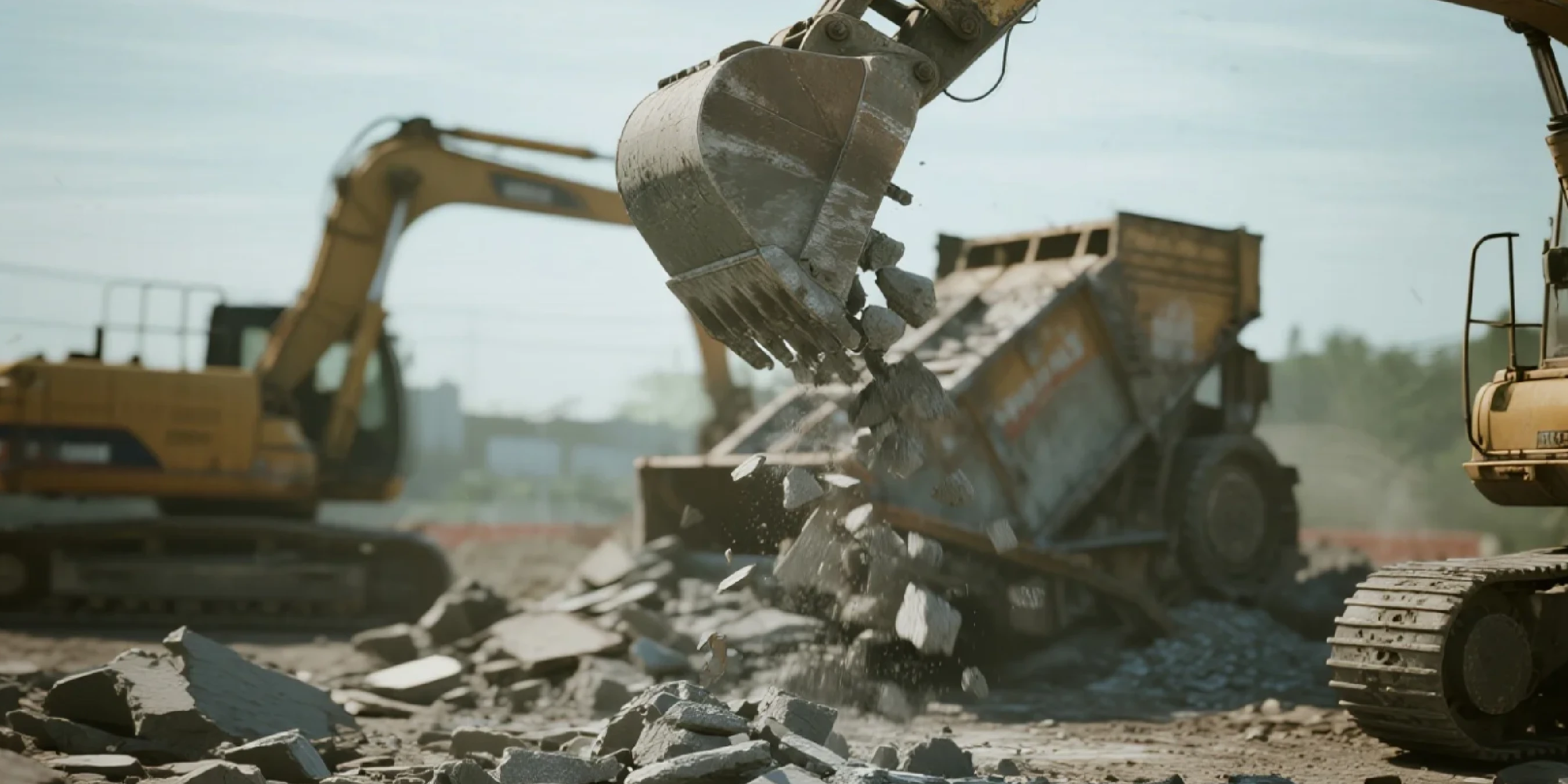
Selection Tips & Common Mistakes to Avoid
5 Critical Buying Mistakes (Based on Research)
The most common purchasing mistake involves focusing solely on initial purchase price while ignoring total cost of ownership implications. Equipment with lower purchase prices often have higher operating costs, shorter service life, or limited parts availability that significantly increases long-term expenses. Conduct thorough TCO analysis comparing alternatives over 10-15 year periods to avoid this costly oversight.
Second, buyers frequently underestimate their capacity requirements by failing to account for material variations, operational efficiency factors, and future growth needs. Size equipment for realistic operating conditions including material handling delays, maintenance time, and peak demand periods. Third, inadequate supplier evaluation leads to poor after-sales support, parts availability issues, and limited technical assistance when problems arise.
Fourth, insufficient attention to site-specific requirements including power availability, space constraints, environmental regulations, and material handling integration creates expensive retrofitting needs. Finally, buyers often overlook operator training requirements, maintenance capabilities, and spare parts inventory needs essential for successful equipment implementation and long-term reliability.
Supplier Evaluation Checklist
Evaluate potential suppliers based on manufacturing experience, industry reputation, technical capabilities, and financial stability. Investigate their product development programs, quality management systems, and continuous improvement initiatives that indicate long-term viability and innovation capability. Review customer references, case studies, and equipment performance records to verify supplier claims and identify potential issues.
Assess supplier support capabilities including parts availability, service network coverage, technical assistance quality, and training programs. Evaluate response times for emergency service, parts delivery schedules, and field service capabilities that directly impact equipment availability and operational continuity. Consider suppliers offering comprehensive service agreements, predictive maintenance programs, and equipment monitoring services that enhance reliability and reduce ownership risks.
Maintenance History and Service Records
Request detailed maintenance records for any used equipment under consideration, including service intervals, component replacement history, and operational conditions. Analyze wear patterns, failure modes, and repair costs to project future maintenance requirements and identify potential reliability issues. Verify maintenance records authenticity and completeness, as incomplete documentation may indicate poor maintenance practices or hidden problems.
For new equipment, investigate manufacturer recommended maintenance schedules, parts replacement intervals, and service requirements. Evaluate your organization's maintenance capabilities, spare parts inventory requirements, and specialized tool needs for proper equipment care. Consider service agreements or maintenance partnerships that may provide cost-effective alternatives to in-house maintenance for complex equipment systems.
Hidden Costs and Budget Overruns
Common hidden costs include site preparation requirements exceeding initial estimates, utility upgrades for power and water supply, environmental compliance systems, and permit fees. Factor in equipment transportation costs, rigging and installation expenses, commissioning and startup services, and initial operator training programs. Include auxiliary equipment costs such as screens, conveyors, dust collection systems, and control buildings required for complete system operation.
Consider ongoing costs including insurance premium increases, property tax assessments, licensing fees, and environmental monitoring requirements. Plan for contingency funds typically 10-20% of project costs to handle unforeseen expenses, specification changes, and market price fluctuations during extended procurement periods. Develop comprehensive cost tracking systems to monitor actual versus budgeted expenses and identify areas requiring improved estimation practices.
Professional Consultation & Custom Solutions
When to Consult Crushing Equipment Experts
Professional consultation becomes essential when dealing with complex applications, unusual material characteristics, or custom process requirements that exceed standard equipment capabilities. Engage experts for large capital investments exceeding $1 million, multi-stage crushing circuits, or projects requiring specialized performance guarantees. Consider professional guidance when evaluating automation systems, environmental compliance requirements, or integration with existing facilities that demand specialized expertise.
Technical consultants provide valuable services including process optimization studies, equipment selection analysis, vendor evaluation assistance, and contract negotiation support. They offer independent perspectives unclouded by supplier bias and access to industry databases comparing equipment performance across multiple manufacturers. Engage consultants early in project development to avoid costly design changes and ensure optimal equipment selection for your specific requirements.
Site Assessment and Equipment Recommendations
Comprehensive site assessments evaluate geological conditions, material characteristics, environmental constraints, and infrastructure requirements that influence equipment selection and installation design. Professional assessments include geotechnical investigations for foundation design, utility surveys for power and water supply, and environmental studies for permitting compliance. These evaluations identify potential issues early in project development, reducing risks and preventing costly modifications during construction.
Equipment recommendations should consider site-specific factors including climate conditions, seismic requirements, flood risks, and accessibility constraints that affect equipment selection and installation methods. Evaluate recommendations for scalability, future expansion capability, and operational flexibility that accommodate changing requirements over the facility's operational lifetime. At Dinosaw, our engineering team provides comprehensive site assessments and equipment recommendations leveraging decades of experience with stone cutting machines and crushing systems across diverse applications.
After-Sales Support and Training Programs
Comprehensive after-sales support includes equipment commissioning, operator training, maintenance guidance, and ongoing technical assistance essential for successful equipment operation. Evaluate supplier training programs covering equipment operation, maintenance procedures, troubleshooting techniques, and safety protocols required for optimal performance and compliance. Consider training documentation quality, hands-on instruction availability, and refresher training programs that maintain operator competency over time.
Assess supplier support capabilities including parts availability, technical hotlines, field service response times, and remote diagnostic capabilities that minimize downtime and operational disruptions. Consider service agreements covering preventive maintenance, emergency repairs, and equipment monitoring that provide predictable costs and enhanced reliability. Evaluate supplier performance guarantees, warranty terms, and long-term support commitments that protect your investment and ensure operational continuity.
Frequently Asked Questions (FAQs)
What size stone crusher do I need for my operation?
Crusher sizing depends on required throughput capacity, feed material characteristics, and product specifications. Calculate required capacity based on annual production goals divided by operating hours, then factor in availability rates of 75-85% for realistic sizing. Consider feed material hardness, maximum particle size, and moisture content that affect crusher selection and capacity ratings. Evaluate future production requirements and plan for 20-30% capacity buffer to accommodate peak demand periods and material variations.
How much does a stone crusher cost?
Stone crusher costs range from $100,000 for small mobile units to over $5 million for large stationary plants. Jaw crushers typically cost $200,000-$800,000, cone crushers range $300,000-$1.2 million, and impact crushers cost $150,000-$600,000 depending on size and features. Total project costs including installation, auxiliary equipment, and site preparation typically double equipment costs. According to NSSGA industry data, complete crushing plants average $1,500-$3,000 per daily ton of capacity including all associated infrastructure and equipment.
What's the difference between jaw, cone, and impact crushers?
Jaw crushers excel in primary crushing with compression action between fixed and movable plates, handling large feed sizes up to 1500mm with high reliability. Cone crushers use compression between eccentric mantle and concave liner, providing precise gradation control ideal for secondary and tertiary applications. Impact crushers utilize high-speed rotor impact against fixed plates, producing excellent particle shape and high reduction ratios best suited for softer materials and recycling applications. Each technology offers distinct advantages depending on material characteristics, product requirements, and operational conditions.
How do I calculate ROI for stone crushing equipment?
ROI calculation requires comparing incremental revenues and cost savings against total investment costs over equipment lifetime. Calculate annual benefits including increased production capacity, reduced operating costs per ton, improved product quality premiums, and reduced maintenance expenses. Factor in tax benefits such as depreciation deductions and investment credits that improve cash flows. Use net present value analysis with appropriate discount rates (typically 8-12% for industrial equipment) to account for time value of money over 10-15 year evaluation periods.
What maintenance is required for stone crushers?
Regular maintenance includes daily visual inspections, weekly lubrication system checks, monthly wear part assessments, and annual major inspections. Jaw crushers require periodic jaw plate replacement (1000-3000 hours), toggle plate inspection, and bearing maintenance. Cone crushers need mantle and concave liner replacement (2000-6000 hours) and hydraulic system servicing. Impact crushers demand frequent blow bar or hammer replacement (500-2000 hours) and rotor balance verification. Maintenance costs typically range 5-15% of annual production revenue depending on material characteristics and operating conditions.
Should I buy new or used stone crushing equipment?
New equipment provides warranties, latest technology, optimal parts availability, and predictable performance but requires higher capital investment. Used equipment offers lower initial costs but may have higher maintenance expenses, limited warranty coverage, and potential reliability issues. Consider used equipment only with verified maintenance records, recent major overhauls, and thorough pre-purchase inspections by qualified technicians. New equipment typically provides better ROI for long-term operations, while used equipment may suit short-term projects or budget-constrained applications with careful risk assessment.
What safety requirements apply to stone crushing operations?
Safety requirements include compliance with OSHA standards for machine guarding, lockout/tagout procedures, respiratory protection from silica dust, and noise exposure limits. Equipment must include emergency stops, access platforms with guardrails, and warning systems for unsafe conditions. Operators require training on equipment operation, safety procedures, and emergency response protocols. Regular safety audits, dust monitoring, and noise level assessments ensure ongoing compliance with evolving regulations and protect worker health.
How do I choose between mobile and stationary crushers?
Choose mobile crushers for operations requiring frequent relocation, contract services, or remote sites with temporary access. Mobile units provide flexibility but typically have 10-20% lower productivity and higher operating costs per ton compared to stationary plants. Select stationary crushers for permanent installations with consistent material supply, higher production requirements, and opportunities for process optimization. Stationary plants offer better integration with conveyor systems, automation capabilities, and long-term cost efficiency. Consider hybrid approaches using mobile primary crushers feeding stationary secondary plants for optimal flexibility and productivity balance. For quarrying operations, integration with permanent granite cutting machine systems often favors stationary crushing installations for maximum operational efficiency.
Conclusion: Making Informed Investment Decisions
Successful stone crusher selection requires comprehensive analysis balancing technical requirements, economic considerations, and operational constraints to optimize long-term value. This guide provides the framework for evaluating alternatives, calculating total cost of ownership, and implementing risk management strategies essential for maximizing return on investment. According to recent sustainability research, modern crushing equipment incorporating energy-efficient designs and environmental controls offers enhanced value through reduced operating costs and regulatory compliance benefits.
The stone crushing equipment market continues evolving with advancing automation technologies, improved materials engineering, and enhanced environmental controls that provide competitive advantages for early adopters. Staying informed about industry trends, technological developments, and regulatory changes ensures your equipment investments remain competitive throughout their operational lifetime. Consider partnerships with experienced suppliers offering comprehensive support services, training programs, and upgrade pathways that protect your investment and enable operational optimization.
Implementing systematic evaluation processes, comprehensive cost analysis, and professional consultation when appropriate helps avoid common purchasing mistakes while ensuring optimal equipment selection for your specific requirements. The substantial capital investments involved in stone crushing equipment demand thorough analysis and professional expertise to achieve successful outcomes that support your organization's long-term growth and profitability objectives.























 English
English 中文
中文 Italian
Italian Türkçe
Türkçe Português
Português

